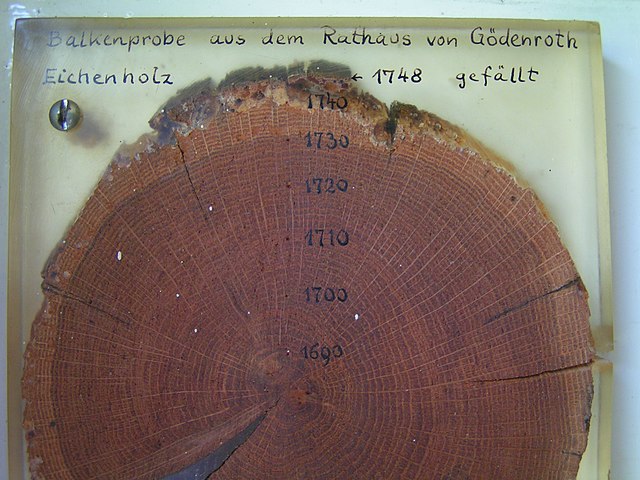Mast is the fruit of forest trees and shrubs, such as acorns and other nuts. The term derives from the Old English mæst, meaning the nuts of forest trees that have accumulated on the ground, especially those used historically for fattening domestic pigs, and as food resources for wildlife. In the aseasonal tropics of Southeast Asia, entire forests, including hundreds of species of trees and shrubs, are known to mast at irregular periods of 2–12 years.
Knocking down acorn to feed pigs. 1300s England.
An abundance of acorns on the ground often occurs during mast seeding years
Image of wood cross section, showing tree-ring chronologies.
The acorn, or oaknut, is the nut of the oaks and their close relatives. It usually contains a seedling surrounded by two cotyledons, enclosed in a tough shell known as the pericarp, and borne in a cup-shaped cupule. Acorns are 1–6 cm long and 0.8–4 cm on the fat side. Acorns take between 5 and 24 months to mature; see the list of Quercus species for details of oak classification, in which acorn morphology and phenology are important factors.
English oak acorn
Acorns from small to large of the Willow Oak, Q. phellos (very small, at center); the Southern Red Oak, Q. falcata; the White Oak, Q. alba; the Scarlet Oak, Q. coccinea; from southern Greenville County, SC, USA. Scale bar at upper right is 1 centimetre (0.39 in).
Diagram of the anatomy of an acorn: A.) Cupule B.) Pericarp (fruit wall) C.) Seed coat (testa) D.) Cotyledons (2) E.) Plumule F.) Radicle G.) Remains of style. Together D., E., and F. make up the embryo.
Ponies eating acorns. Acorns can cause painful death in equines, especially if eaten to excess amounts.







